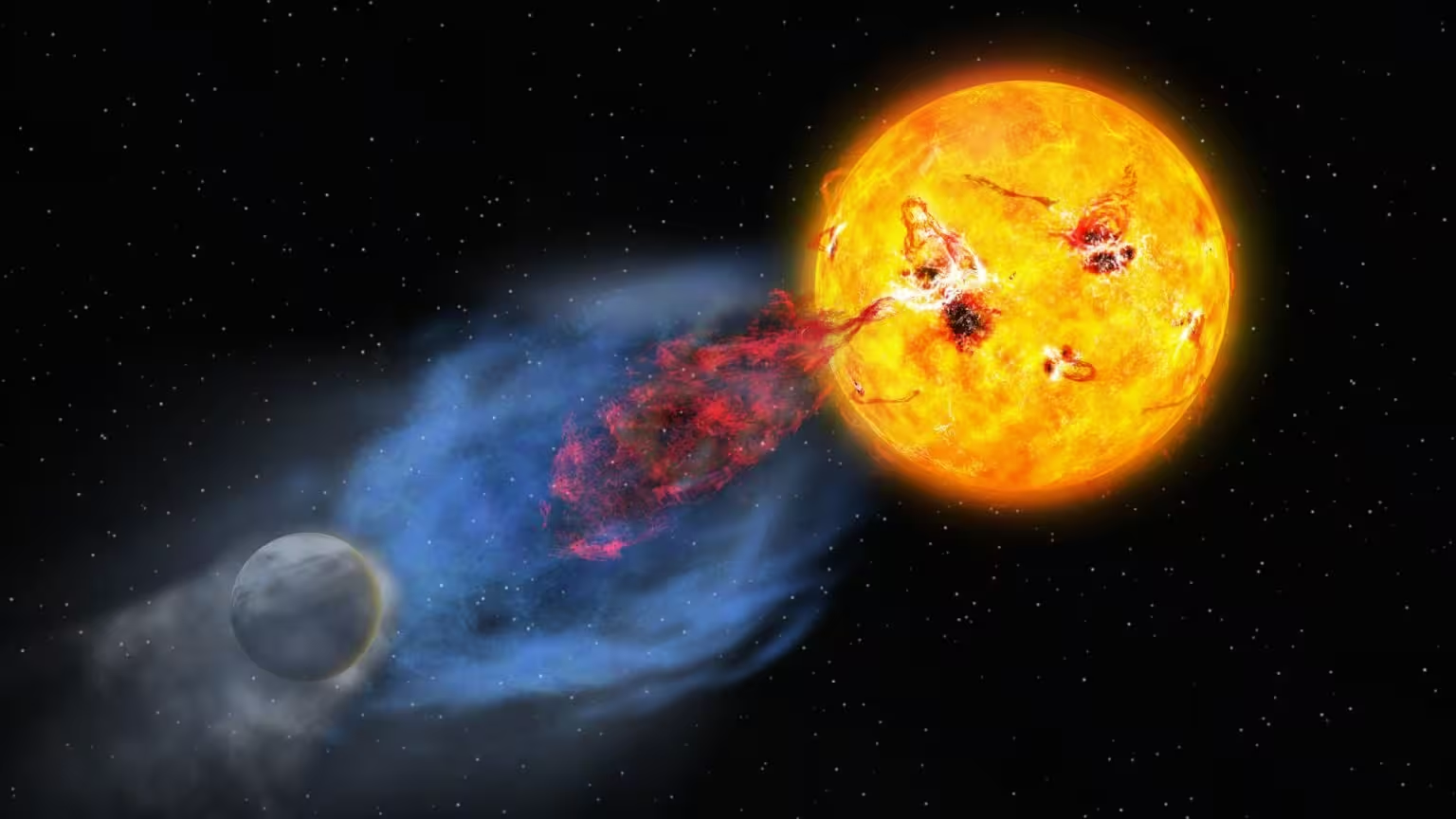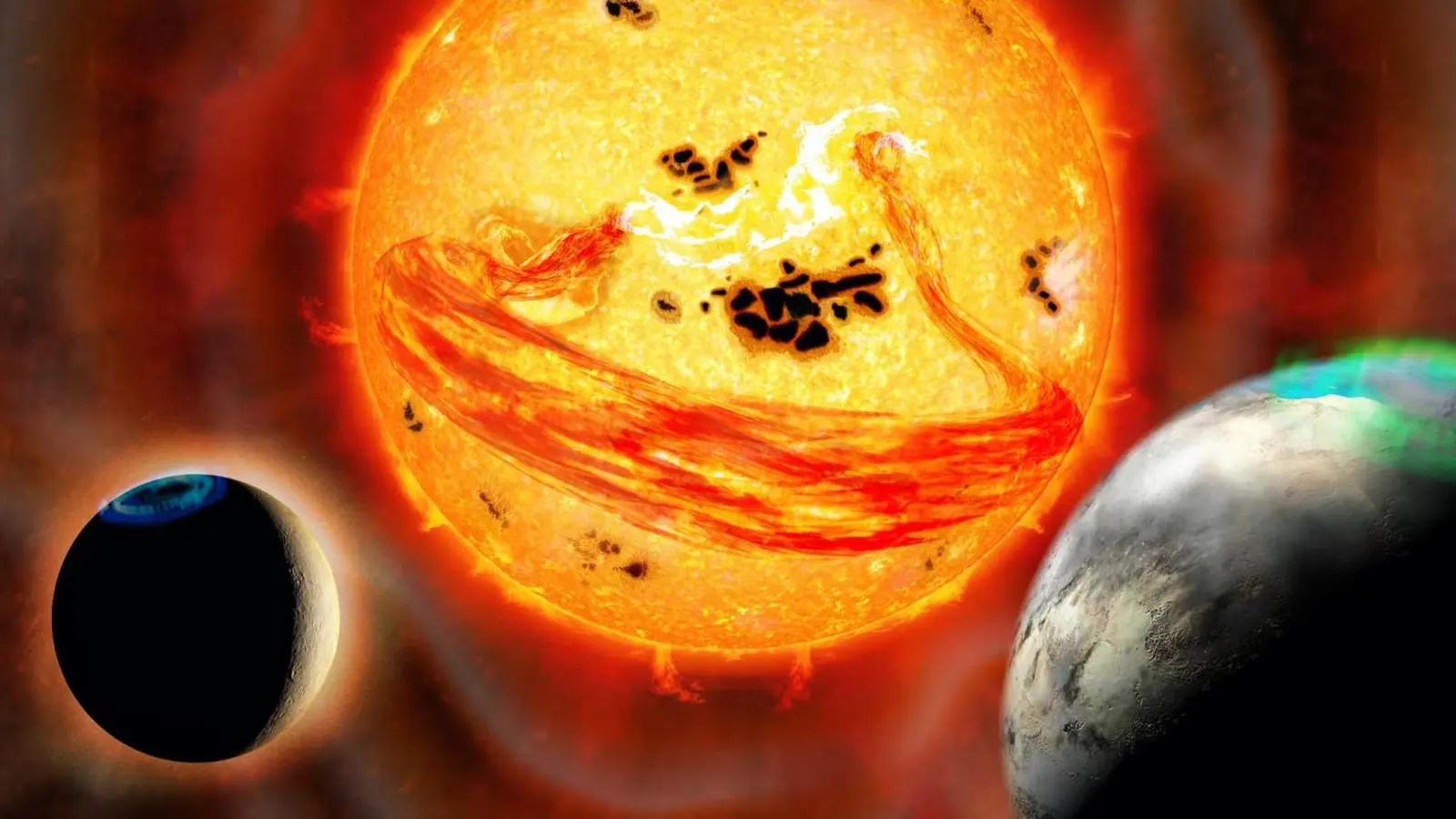5 Minutes
Astronomers have caught the first clear sign of a multi-temperature coronal mass ejection from a young, Sun-like star, offering a new window into how violent stellar outbursts may have shaped the early solar system and the habitability of young planets.
A youthful Sun on display: why EK Draconis matters
Our modern Sun still launches coronal mass ejections, or CMEs, but evidence suggests the young Sun was far more tempestuous. To reconstruct that past, astronomers study solar analogs—stars that closely resemble the Sun but are much younger. EK Draconis is one such star, a proxy for the Sun when it was a few hundred million years old and still settling into middle age. Because energetic particles and plasma ejections from young stars can radically alter atmospheres, detecting CMEs from these stars helps scientists understand conditions that shaped early Earth, Mars, and Venus.
How the team caught a stellar explosion in two temperatures
An international team led in part by Kosuke Namekata of Kyoto University coordinated simultaneous space- and ground-based observations to capture the event. They combined ultraviolet spectroscopy from the Hubble Space Telescope with optical Hα measurements from three ground telescopes in Japan and Korea. Hubble targeted far-ultraviolet emission lines sensitive to hot plasma, while the ground instruments tracked cooler hydrogen gas via the Hα line. The synchronized campaign made it possible to watch both hot and cool components of the same eruption unfold in real time.

Artist’s depiction of a coronal mass ejection from EK Draconis. The hotter and faster ejection is shown in blue, while the cooler and slower ejection is shown in red.
Key discovery: hot, fast plasma followed by cool, slower gas
The observations revealed a striking two-component CME. Hot plasma at roughly 100,000 kelvin was expelled first, traveling at speeds between 300 and 550 kilometers per second. Roughly ten minutes later, cooler gas at about 10,000 kelvin was detected moving outward at about 70 kilometers per second. The hot component carried substantially more kinetic energy, indicating that young Sun-like stars can unleash powerful, shock-driving eruptions that produce energetic particles.
Technical notes on the measurement
- Hubbleâs far-ultraviolet spectrograph measured emission lines formed in high-temperature plasma, allowing estimation of temperature and Doppler shifts that indicate speed.
- Ground-based Hα spectra traced cooler, neutral hydrogen threads that often follow or accompany the hotter core of a CME.
- Multi-wavelength timing was crucial: without simultaneous UV and optical coverage the two-temperature nature of the event would have been missed.
Why this matters for planetary atmospheres and life
Strong CMEs and associated energetic particles can strip atmospheres, drive chemical reactions, and influence greenhouse gas inventories. In the early solar system, frequent super-eruptions from the Sun might have eroded volatile layers on young planets or injected energy that helped synthesize prebiotic molecules. The new detection supports theoretical models in which high-energy eruptions contribute both destructive and constructive processes important for planetary habitability. In short, these events could simultaneously threaten atmospheres and catalyze the chemistry that leads toward life.
Researchers emphasize that the hot, faster plasma component likely does the most damage at large distances because it carries more energy and produces strong shocks. That makes multi-temperature CMEs an important factor to model when estimating atmospheric loss, radiation exposure at planetary surfaces, and long-term climate evolution around young stars.
Collaborative astronomy: how teamwork made the observation possible
The success of this measurement depended on rapid coordination across institutions in Japan, Korea, and the United States. By aligning Hubbleâs scheduled observing windows with ground-based telescope campaigns, the team overcame the usual challenge of catching transient stellar events. Kosuke Namekata noted that the effort highlights international scientific cooperation: different facilities, different countries, one common scientific goal.
Expert Insight
Dr. Sara Velasquez, a fictional astrophysicist specializing in stellar activity, comments: "This observation is a game changer because it confirms that young solar analogs can produce CMEs with multiple temperature components. That changes how we model atmospheric erosion and radiation environments for young exoplanets. Continued coordinated monitoring will let us map the frequency and energy distribution of these eruptions, which is essential for assessing habitability beyond our solar system."
Future work will expand monitoring to a larger sample of young Sun-like stars, refine theoretical models of CME-driven atmospheric loss, and explore implications for exoplanet atmospheres detected by current and future observatories. Multi-wavelength campaigns like this one are now a proven strategy for capturing the fleeting, high-energy phenomena that shaped early planetary environments.
Source: scitechdaily
Comments
Tomas
Wait, are they sure the hot component caused the shocks? Ten minute gap seems short for two separate blobs… maybe projection effects? curious but skeptical, need more obs
astroNix
wow that two-temp CME is wild! if the young Sun did this often no wonder atmospheres got hammered. love the UV + Hα sync, team effort, but need stats, more events pls


Leave a Comment